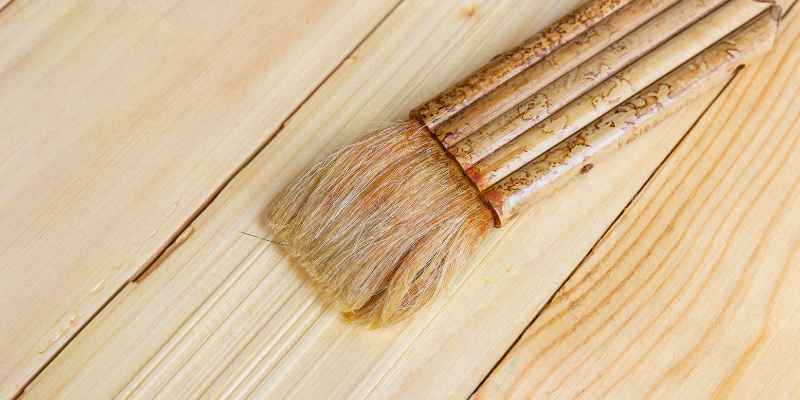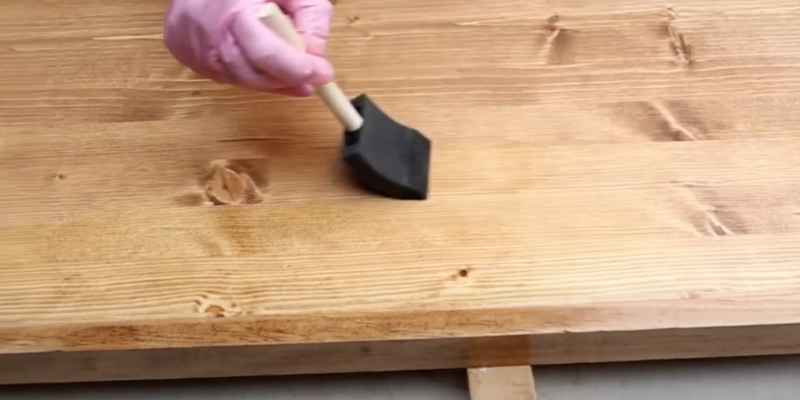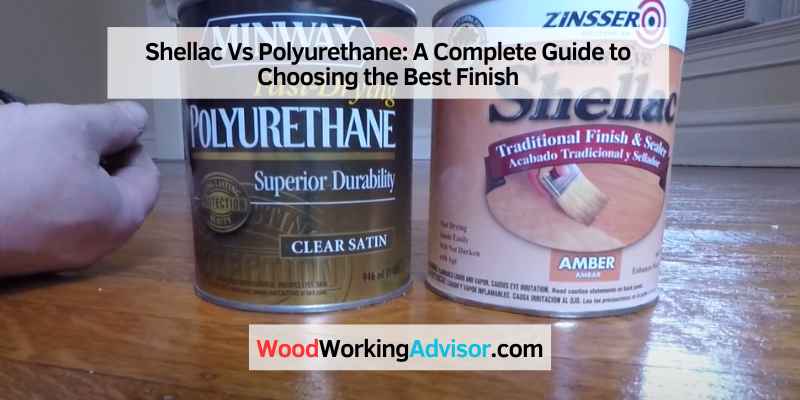Shellac and polyurethane are two popular finishes for wood surfaces, with shellac offering a more traditional and natural look, while polyurethane provides a durable and long-lasting protection that is resistant to scratches and moisture.
What Is Shellac?
Shellac is a natural resin derived from the secretions of the lac beetle. It offers a beautiful and durable finish, but it is prone to damage from water and heat. In contrast, polyurethane is a synthetic coating that provides better resistance against moisture and high temperatures, making it a popular choice for protecting wood surfaces.
Choose the right one based on your specific needs and preferences.
Shellac is a natural resin secreted by the female lac bug. It is derived from the excretions of these insects, which live on trees in Southeast Asia and India. The resin is harvested, processed, and refined to create a versatile and durable material that has been used for centuries in various applications. Shellac is known for its unique properties, making it a popular choice in woodworking and as a protective finish for furniture and other surfaces.
What is Shellac made of?
Shellac is made up of several components that contribute to its distinctive properties. The main ingredient in shellac is the resin secreted by the female lac bug. This resin contains a natural pigment that provides the characteristic amber color associated with shellac. Additionally, shellac contains wax, impurities, and other organic compounds that are extracted during the refining process. These components work together to create a durable and glossy finish that enhances the natural beauty of wood and other materials.
Pros and cons of Shellac
Shellac offers a range of advantages and disadvantages that should be considered when deciding whether to use it as a finish or coating. Here are some key points to keep in mind:
Pros:
– Shellac is a natural product, making it environmentally friendly and sustainable.
– It dries quickly, allowing for efficient application and reduced waiting time.
– Shellac can be easily repaired or refreshed by applying another coat.
– It provides a warm and glossy finish that enhances the natural beauty of wood.
– Shellac is resistant to water and mild chemicals, making it suitable for use in a variety of environments.
Cons:
– Shellac is not as durable as some other finishes, such as polyurethane.
– It is susceptible to heat and can be damaged by hot objects.
– Shellac can darken over time, which may change the appearance of the finished product.
– It requires periodic maintenance to retain its protective qualities.
– Shellac may not be suitable for outdoor applications or high-traffic areas.
Best uses for Shellac
While shellac may not be the most durable finish available, it is highly versatile and has a range of applications where its unique properties shine. Here are some of the best uses for shellac:
- Woodworking: Shellac provides an excellent finish for woodworking projects, enhancing the natural grain and color of the wood while offering protection against wear and moisture. It can be used on furniture, cabinets, floors, and more.
- Antique restoration: Shellac has long been used in the restoration of antique furniture and other artifacts. Its ability to blend seamlessly with existing finishes and its restorability make it a popular choice among antique enthusiasts.
- Crafts and decorative items: Due to its quick drying time and glossy finish, shellac is ideal for small crafts and decorative items. It can be used to seal and protect surfaces like ceramics, metals, and paper.
Ultimately, the decision to use shellac or polyurethane will depend on the specific project and desired outcome. Shellac offers a natural and beautiful finish with unique characteristics, while polyurethane provides superior durability. Understanding the pros, cons, and best uses of each option will help you make an informed decision for your woodworking or finishing needs.

What Is Polyurethane?
Polyurethane is a durable and versatile synthetic material commonly used for sealing and protecting various surfaces, including wood, metal, and concrete. It is known for its exceptional resistance to wear and tear, making it a popular choice for both commercial and residential applications.
What Is Polyurethane Made Of?
Polyurethane is a polymer that is created through a chemical reaction between diisocyanates and polyols. Diisocyanates are compounds that contain two isocyanate functional groups, while polyols are compounds with multiple hydroxyl functional groups. When these two components are mixed together, they undergo a process called polymerization, resulting in the formation of the polyurethane material.
Pros And Cons Of Polyurethane
Pros
- Polyurethane offers excellent durability, making it resistant to scratches, stains, and other everyday wear and tear.
- It provides a protective barrier against moisture, preventing water damage and warping.
- It enhances the natural beauty of the surface it is applied to, highlighting the grain and color.
- Polyurethane is available in various finishes, including glossy, satin, and matte, allowing for customization to suit different aesthetic preferences.
- It can withstand extreme temperatures and UV exposure, making it suitable for both indoor and outdoor applications.
- It is relatively easy to apply and dries quickly, minimizing downtime during the application process.
Cons
- Polyurethane can be challenging to work with for inexperienced individuals, as it requires careful preparation and application techniques to achieve a smooth and even finish.
- It can emit strong fumes during the application and curing process, requiring proper ventilation or the use of protective masks.
- If not properly applied or maintained, polyurethane can chip or peel over time, requiring reapplication or touch-ups.
Best Uses For Polyurethane
Taking into consideration its durability and protective properties, polyurethane is commonly used in a variety of applications:
- Flooring – Polyurethane is an excellent choice for sealing and protecting hardwood, laminate, and concrete floors, ensuring they withstand heavy foot traffic and maintain their beauty for years.
- Furniture – Applying polyurethane on wooden furniture provides a durable, water-resistant finish that protects against spills, stains, and general wear and tear.
- Cabinets – Polyurethane can enhance the durability and appearance of kitchen or bathroom cabinets, making them more resistant to moisture and everyday use.
- Doors and windows – Sealing exterior doors and windows with polyurethane helps protect them from the elements and prolong their lifespan.
- Outdoor applications – From decks and fences to wooden outdoor furniture, polyurethane provides a protective layer that helps them withstand the effects of weather, UV rays, and moisture.
Differences Between Shellac And Polyurethane
When it comes to choosing the right finish for your woodwork projects, it’s essential to understand the differences between shellac and polyurethane. Both options have their distinct characteristics, offering unique benefits depending on your specific needs.
Appearance
Shellac and polyurethane have different effects on the appearance of wood. Shellac, a natural product derived from the secretions of the lac bug, enhances the natural beauty and warmth of the wood. It provides a soft and warm glow, bringing out the rich tones and deep colors of the grain. On the other hand, polyurethane creates a more glossy or satin finish, adding a layer of protection while giving the woodwork a smooth and polished appearance.
Durability And Protection
When it comes to durability and protection, polyurethane takes the lead. It forms a hard and durable surface that can withstand heavy use, making it an ideal choice for high-traffic areas such as floors, tables, and countertops. Polyurethane offers excellent resistance to scratches, water, and heat, ensuring a long-lasting finish that stands the test of time. In contrast, shellac provides moderate protection against moisture and wear. It may require periodic reapplication and is more suitable for low-impact items such as decorative pieces and furniture that won’t be subjected to heavy use.
Application And Maintenance
Applying shellac and polyurethane differ in terms of their processes and maintenance requirements. Shellac is typically applied using a brush and can dry quickly, allowing for multiple coats in a shorter span of time. It is also relatively easy to repair, as you can simply reapply shellac over the existing finish. Polyurethane, on the other hand, requires more time to dry between coats and may require sanding between applications for a smoother finish. Additionally, polyurethane is more challenging to repair, often requiring the removal of the entire finish before reapplication.
| Shellac | Polyurethane | |
|---|---|---|
| Appearance | Gives a soft and warm glow, highlighting the natural beauty of wood. | Creates a glossy or satin finish, providing a smooth and polished appearance. |
| Durability and Protection | Moderate resistance to wear and moisture, suitable for low-impact items. | Offers excellent durability and protection against scratches, water, and heat, ideal for high-traffic areas. |
| Application and Maintenance | Quick-drying, easy to repair, and reapply. Suitable for multiple coats. | Requires longer drying time, may require sanding between coats. Challenging to repair, often requiring removal of the entire finish. |
Considering the differences between shellac and polyurethane in terms of appearance, durability, protection, application, and maintenance, you can now make an informed decision about which finish best suits your woodworking project.
Choosing The Best Finish
When it comes to choosing the best finish for your woodworking project, it’s important to consider the pros and cons of different options. Shellac and polyurethane are two popular choices, each with their own unique qualities. In this article, we will explore the key factors to consider when making your decision.
Considerations For Your Project
Before you decide on a finish, it is crucial to assess the specific requirements of your project. Different finishes offer varying degrees of protection and durability, so it’s essential to choose the one that best suits your needs. Here are some factors to consider:
- The type of wood: Some finishes work better on certain types of wood than others. For example, shellac is known to enhance the warm tones of lighter woods, while polyurethane provides excellent protection for darker woods.
- The level of durability: If your project will be subject to heavy wear and tear, such as a tabletop or floor, you need a finish that can withstand the test of time. Polyurethane is highly durable and resistant to scratches and moisture, making it a great choice for high traffic areas.
- Application method: Some finishes require specialized knowledge and skills for application, while others are more user-friendly. Shellac, for instance, can be easily applied with a brush or rag, making it suitable for DIY projects.
Personal Preferences And Desired Outcomes
Your personal preferences and desired outcomes should also play a significant role in your decision-making process. Here are a few aspects to consider:
- Appearance: Shellac offers a traditional and warm look, enhancing the natural beauty of wood grain. On the other hand, polyurethane provides a glossy and modern finish.
- Odor and toxicity: If you have sensitivities or prefer a low-odor finish, shellac is a better option. Polyurethane, although highly durable, can have a strong smell during application due to the presence of volatile organic compounds (VOCs).
- Environmentally friendly: If eco-friendliness is a priority for you, shellac might be the better choice. It is derived from natural sources, such as the secretion of the lac bug, while polyurethane is a synthetic product.
Ultimately, choosing the best finish for your project comes down to finding the perfect balance between the practical considerations and your personal preferences. By carefully evaluating the type of wood, desired durability, application method, as well as your aesthetic and environmental preferences, you can make an informed decision between shellac and polyurethane.

Frequently Asked Questions On Shellac Vs Polyurethane
What Are The Disadvantages Of Shellac?
Shellac has a few disadvantages. It can get easily damaged by water and heat, and it requires regular maintenance. Additionally, its glossy finish may not appeal to everyone, and it can take a while to dry completely.
Why Use Shellac Before Polyurethane?
Shellac is used before polyurethane for several reasons. First, it acts as a sealant, preventing any stain or dye from bleeding through the finish. Second, it helps to enhance the adhesion of the polyurethane to the surface. Lastly, shellac provides a smooth and even base for the polyurethane to adhere to, resulting in a more professional and durable finish.
What Is Shellac Wood Polish?
Shellac wood polish is a natural varnish made from the resin secreted by the female lac bug. It’s commonly used to protect and enhance the beauty of wood surfaces. With its glossy finish, shellac adds depth and richness to furniture, floors, and other wooden items.
How Can You Tell If Wood Is Polyurethane?
You can determine if wood is polyurethane by checking for a clear, glossy finish that is smooth and even. Polyurethane coatings provide a durable and protective layer that enhances the natural beauty of the wood.
Conclusion
Overall, when deciding between shellac and polyurethane for your woodworking project, it’s important to consider the specific qualities and characteristics that each finish offers. While shellac offers a more traditional and natural look, polyurethane provides enhanced durability and protection. Ultimately, the choice depends on your specific needs and preferences.
Take the time to assess the project requirements and select the finish that will best complement your piece and provide lasting beauty.


